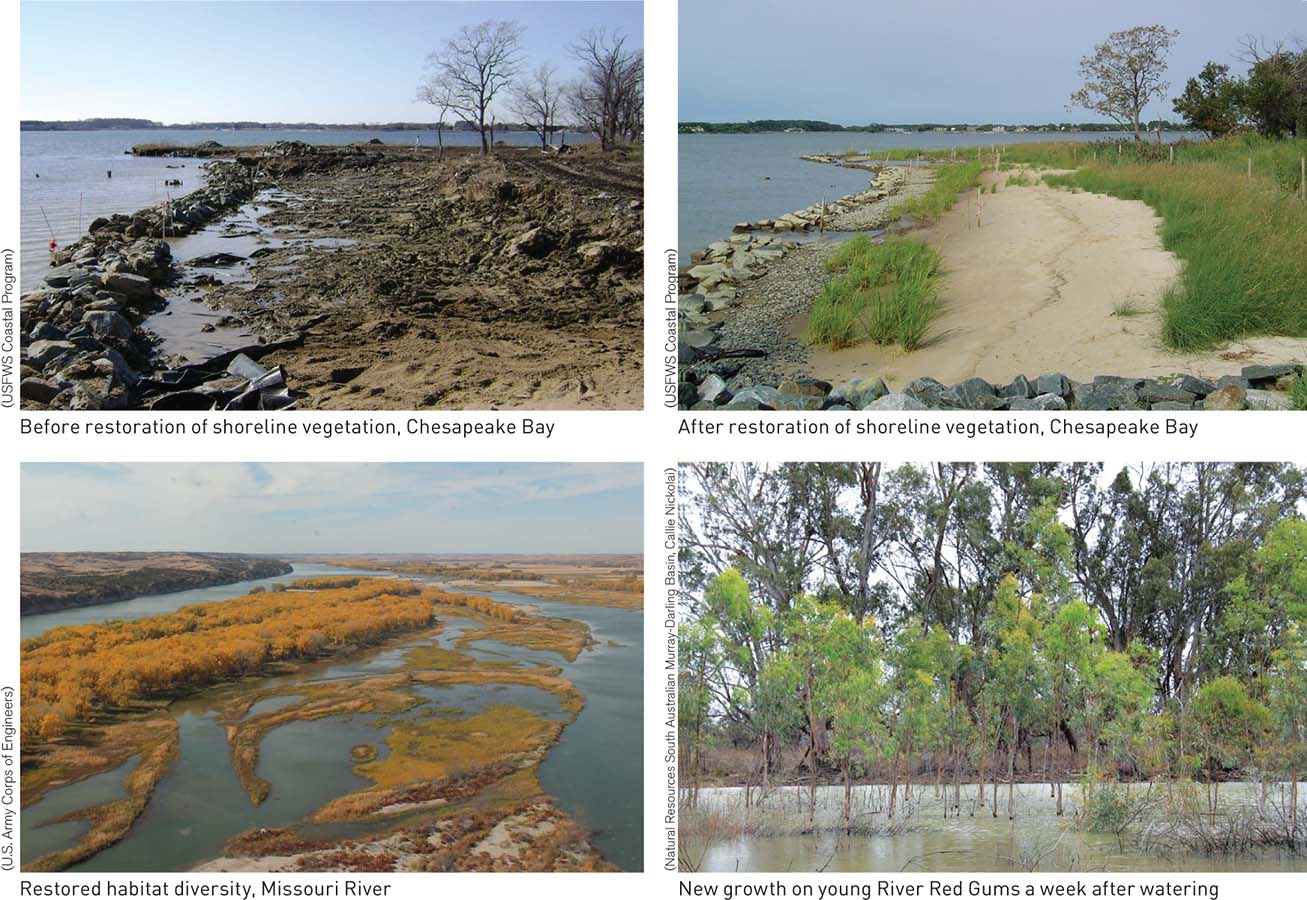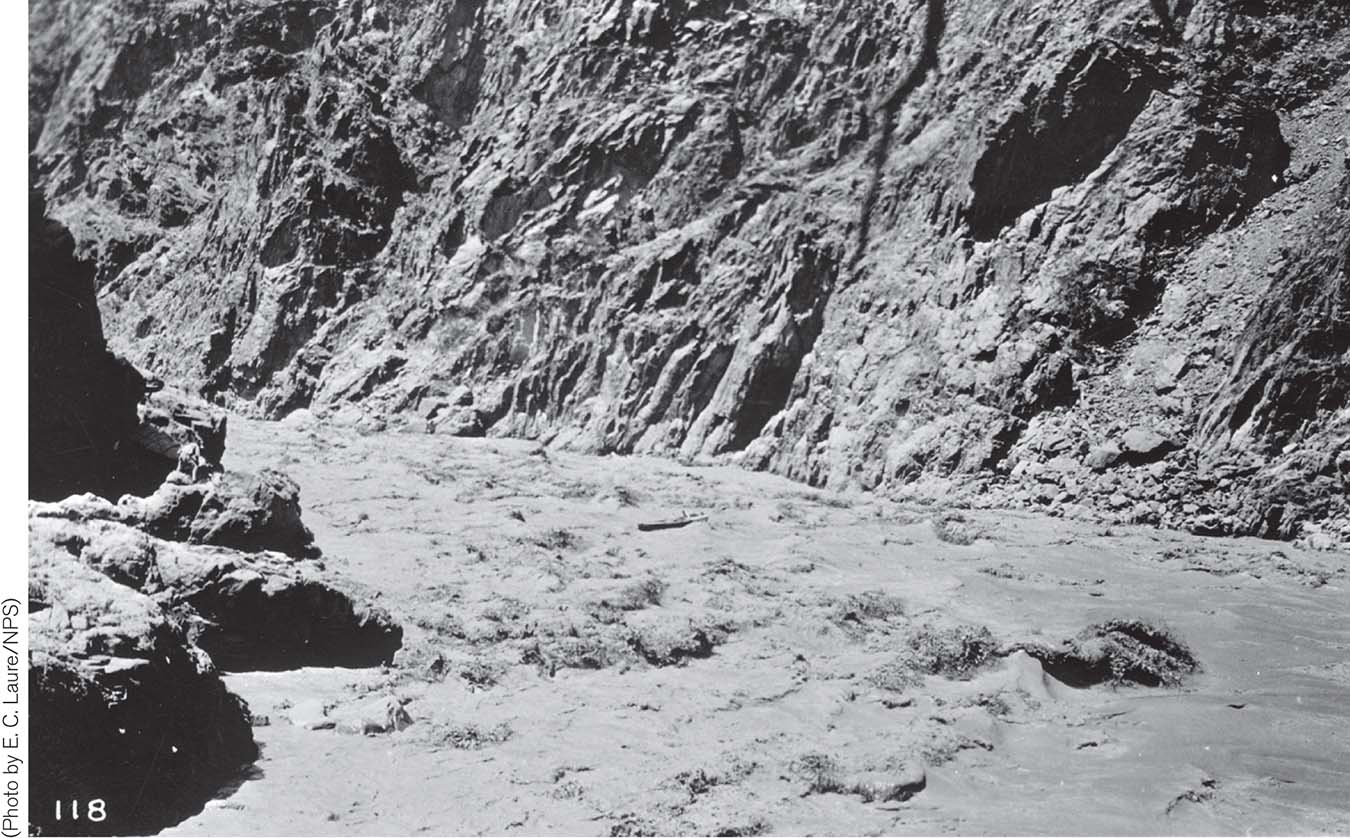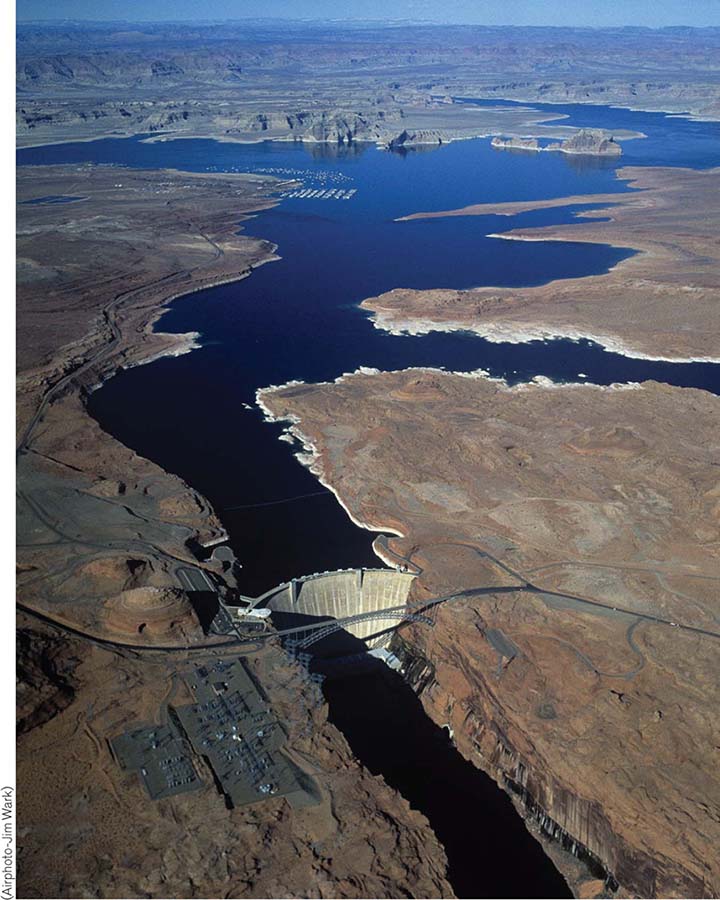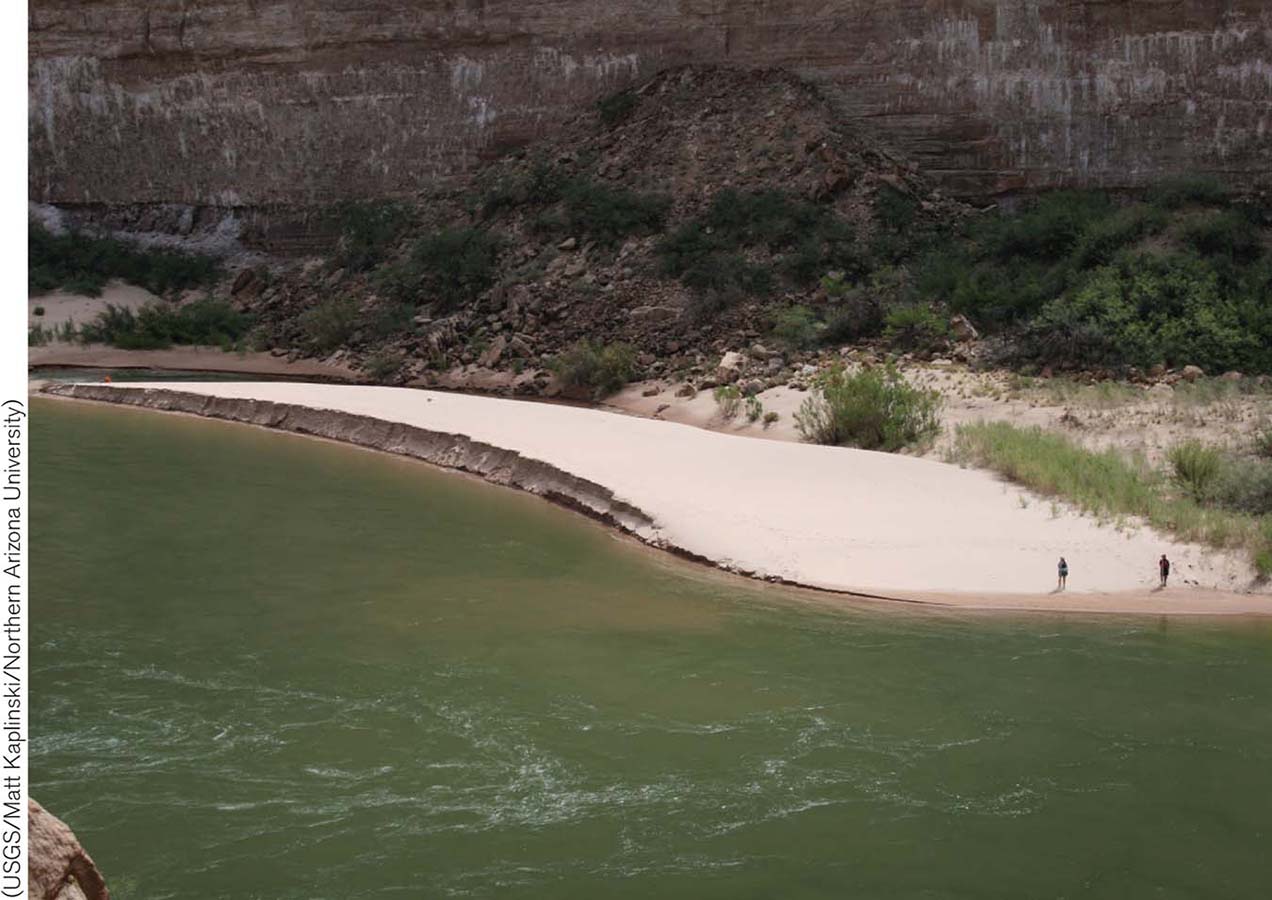6.10 Conservation and restoration can protect aquatic ecosystems and biodiversity
Technology is not the only solution to securing the future of our water resources. Restoring aquatic ecosystems can provide many benefits, such as purifying water and reducing erosion (Figure 6.34). The first step to restoring an aquatic ecosystem is ensuring that there is sufficient water to support populations of aquatic species. Many states have laws requiring that some minimum instream flow be maintained in rivers. In other cases, river managers have gone beyond minimum flows and have restored some of the historical floods to approximate a natural flow regime.

Restoring Floods to the Colorado River
Historically, the Colorado River flooded each spring as snow melted in its headwaters in the Rocky Mountains. These torrential flows also carried a large amount of sediment that was deposited in sandbars along the length of the river (Figure 6.35). Sandbars are especially important in the Grand Canyon, where the quiet backwater areas they create serve as critical nursery areas for the young of endangered native fish. Sandbars themselves provide camping and pullout places for rafters and backpackers. The size of the spring flows was greatly reduced, however, as dams were built on the river system. Damming the Colorado River also reduced the amount of sediment available in the river for forming sandbars, since reservoirs trap sediment.

The progressive taming of the river was largely done in 1963, with the completion of Glen Canyon Dam 24 kilometers (15 miles) upriver from the Grand Canyon. The reservoir behind the dam, Lake Powell, extends nearly 300 kilometers (186 miles) along its main channel and stores 30 km3 of water when full (Figure 6.36). In the absence of flooding and greatly reduced sediment below Lake Powell, sandbars were being steadily lost in the Grand Canyon. Colonization by invasive plants, especially saltcedar, Tamarix species (see Figure 4.28, page 119), has converted some sandbars into dense thickets of vegetation, while erosion gradually washed away others. The result was reduced quality of habitat for both native fish and recreational rafters.


What are the benefits of river restoration for both tourism and endangered fish?
River managers proposed controlled flooding to help sustain sandbars in the Colorado River. Their plan was to use short pulses of high river flows to suspend sediments on the riverbed, which would settle out, forming sandbars as river flow receded. The first controlled flood below Glen Canyon Dam took place in the spring of 1996, with others following in 2004, 2008, and 2012. During controlled flooding, river managers leave the floodgates open for about 3 to 5 days and time the floods to follow inputs of sand from tributaries of the Colorado River. For example, the Paria River, which flows into the Colorado River downstream from Glen Canyon Dam, washed more than 1 million tons of sediment into the river a few months before the 2004 controlled flood. Controlled flooding has been successful at restoring sandbars to the Colorado River shoreline within the Grand Canyon (Figure 6.37).

Restoring River and Wetland Structure
The Kissimmee River in central Florida was altered dramatically in the 1940s during efforts to control flooding on private property. Flood control efforts converted the meandering channel to a straight, 90-

The Kissimmee restoration project, which began in 1992, is the largest ecosystem restoration attempted to date. When completed in 2015, the project will have restored 100 km2 (40 mi2) of river–
The response of the biological community to restoration has been rapid and impressive. Numbers of wading birds in the restored river and floodplain areas have increased five-
Think About It
The cost of restoring the Kissimmee River has been projected at about $500 million. What are the potential benefits?
Why do water managers need to coordinate controlled flooding with sediment inputs from Colorado River tributaries below the Glen Canyon Dam?
How might dam building and prevention of the historical floods on the Colorado River give an advantage to invasive non-
native fish species in competition with native fish species?
6.8–6.10 Solutions: Summary
Water conservation can be very effective at reducing water use—
Restoring aquatic ecosystems involves establishing minimum stream flows and reintroducing periodic flooding. For example, controlled flooding is being used on the Colorado River to sustain critical sandbar habitat within the Grand Canyon. The Kissimmee River in central Florida was “channelized” to prevent flooding, which had disastrous consequences for the functioning of the river–